Key takeaways:
- Hydrocolloids like xanthan gum, agar-agar, and carrageenan can significantly enhance the texture and presentation of dishes, turning ordinary meals into extraordinary experiences.
- Precision in measurements and temperature control is crucial when experimenting with hydrocolloids to achieve the desired consistency and avoid cooking mishaps.
- Patience and a willingness to experiment are important, as they can lead to successful culinary innovations and unexpected improvements in recipes.
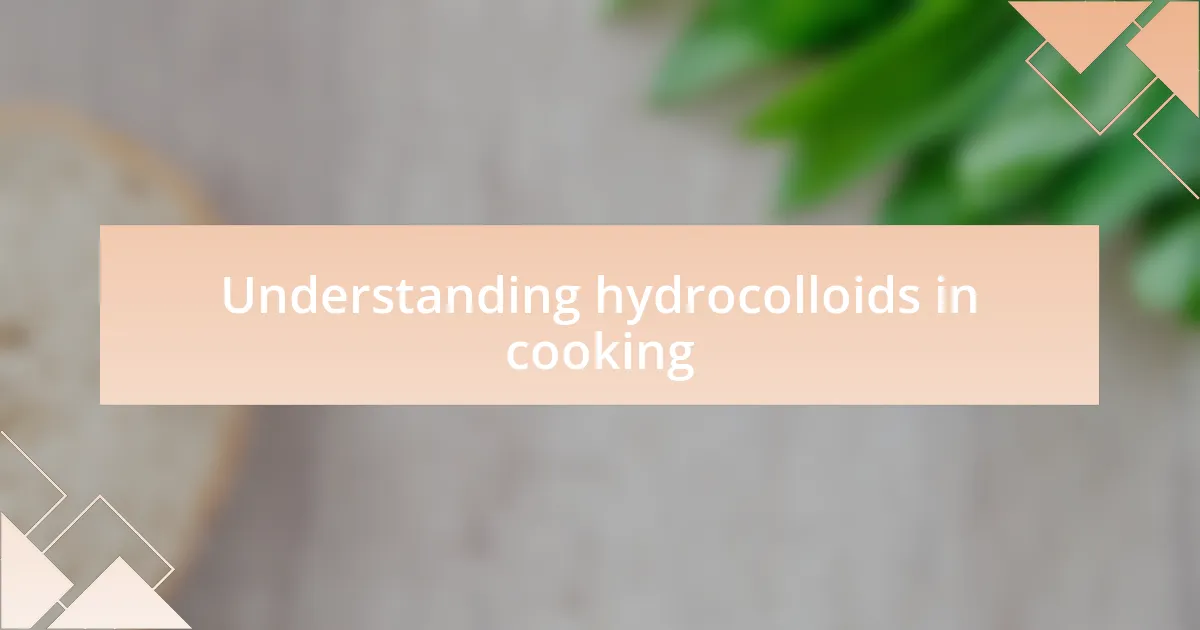
Understanding hydrocolloids in cooking
Hydrocolloids are fascinating ingredients that act as thickening, gelling, or stabilizing agents in cooking. When I first encountered xanthan gum, I was amazed by how just a tiny amount could transform a runny sauce into a luxurious, velvety texture. Have you ever thought about how important consistency is in your favorite dishes? Hydrocolloids play a crucial role in achieving that perfect mouthfeel.
As I experimented with agar-agar, a plant-based substitute for gelatin, I discovered the delicate balance it brings to desserts. The first time I made a fruit jelly, I was thrilled to see it set perfectly and hold its shape yet still dissolve beautifully in the mouth. Have you ever been surprised by how an ingredient can elevate an everyday dish? That’s the magic of hydrocolloids—they can turn the ordinary into something extraordinary.
Incorporating hydrocolloids can be a bit intimidating at first, but the results are often worth the leap. I remember feeling nervous about using carrageenan for the first time, only to find it transformed my creamy soups into restaurant-quality creations. Isn’t it exciting to think about how these ingredients can enhance our culinary repertoire? There’s a whole world of creativity waiting to be unlocked!
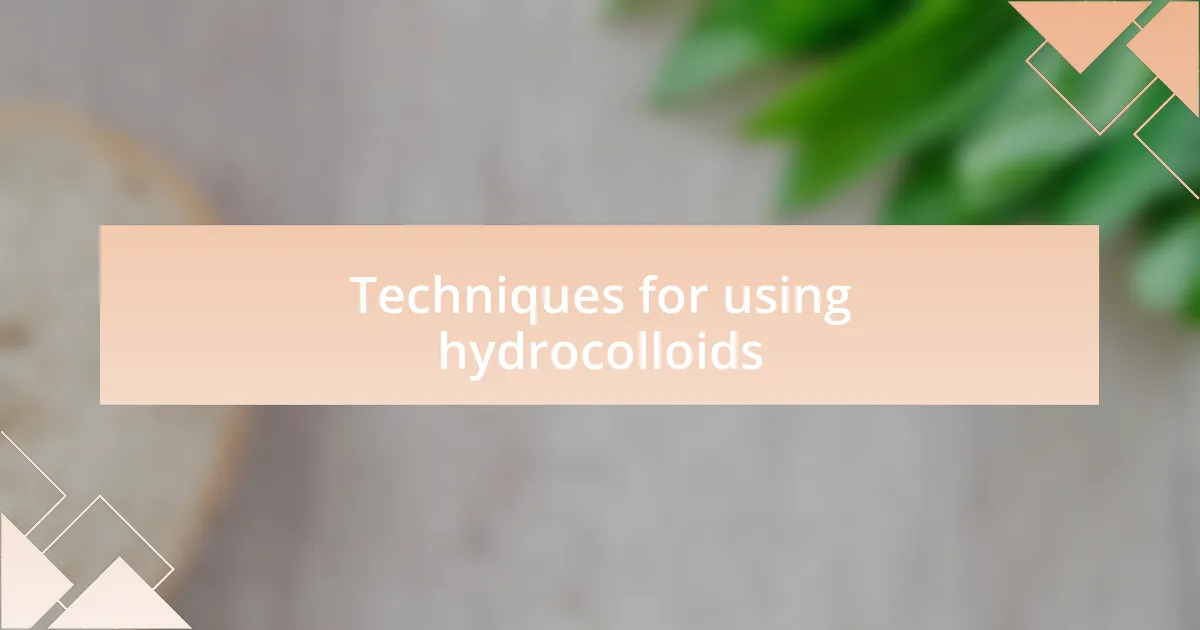
Techniques for using hydrocolloids
When using hydrocolloids, precision is key. For instance, I learned the hard way that when experimenting with guar gum, it’s essential to blend it thoroughly to avoid clumps. Have you ever faced a similar challenge where a little oversight made a big difference in the final product? It’s a humbling reminder that attention to detail is crucial in cooking.
I vividly recall a moment while trying to create a molecular gastronomy dish with sodium alginate. By carefully dripping a flavored liquid into a calcium bath, I watched in awe as beautiful spheres formed before my eyes. It raised a question for me: how often do we overlook the artistic potential of science in the kitchen? This experience reinforced my belief that hydrocolloids offer not just texture but also an element of surprise and creativity.
Another technique I’ve found effective is temperature control when using pectin for jams. The first time I didn’t heat the mixture enough, my jam ended up more like syrup than spreadable goodness. This mishap taught me that temperature directly influences the setting properties of hydrocolloids. Have you experienced a cooking mishap that turned into a valuable lesson? The journey of mastering hydrocolloids can be a rollercoaster, but each twist and turn brings new insights and flavors to explore.
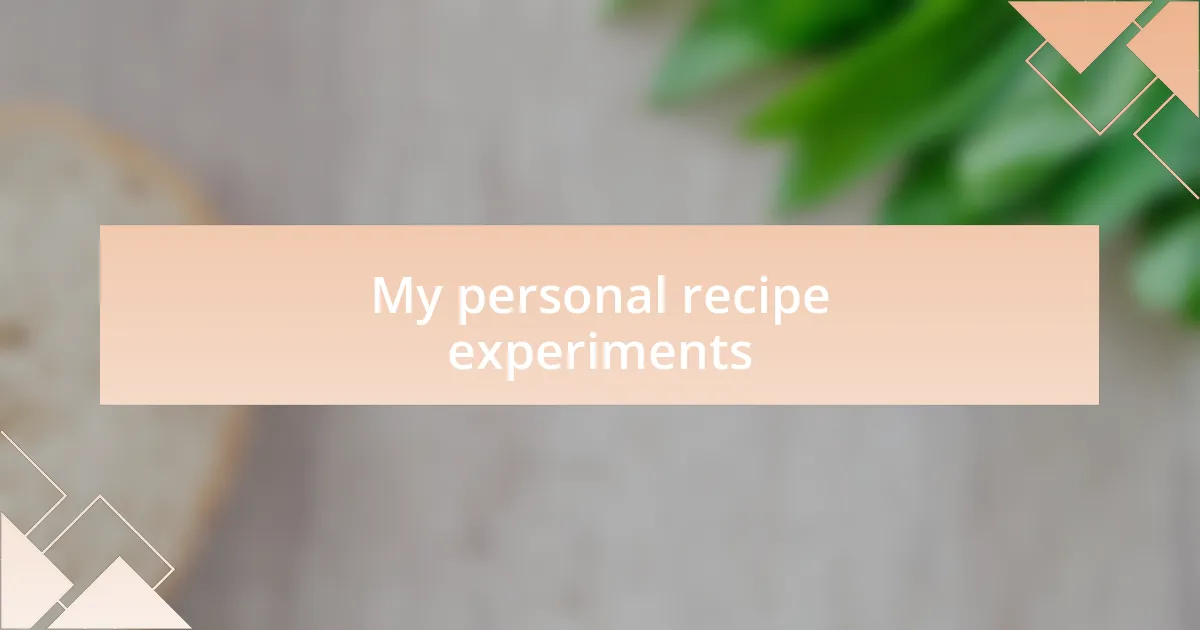
My personal recipe experiments
One of my most memorable recipe experiments involved using agar-agar. I decided to create a vegan panna cotta, something I had never attempted before. The first batch turned into a rubbery nightmare, but after adjusting the agar concentration, I finally achieved that silky texture I was aiming for. Isn’t it amazing how a simple adjustment can turn a failure into a success?
Then there was my attempt at making fruit caviar using sodium alginate, inspired by my love for playful presentations in dishes. The first few tries were messy, and I can’t tell you how many times I had to scrape the kitchen counter clean. However, when those little pearls formed correctly, I felt a rush of joy—it was like capturing a piece of art in the palm of my hand. Have you ever felt that thrilling rush when something works out perfectly in your cooking?
Most recently, I ventured into the world of xanthan gum while trying to create a gluten-free pancake batter. In my first attempt, I accidentally added too much, resulting in a mixture that could have been mistaken for glue. After toning it down, I discovered the right balance, and the pancakes turned out fluffy and delicious. It’s moments like these that remind me how experimentation in the kitchen is not only about learning but also about rediscovering joy in the familiar.
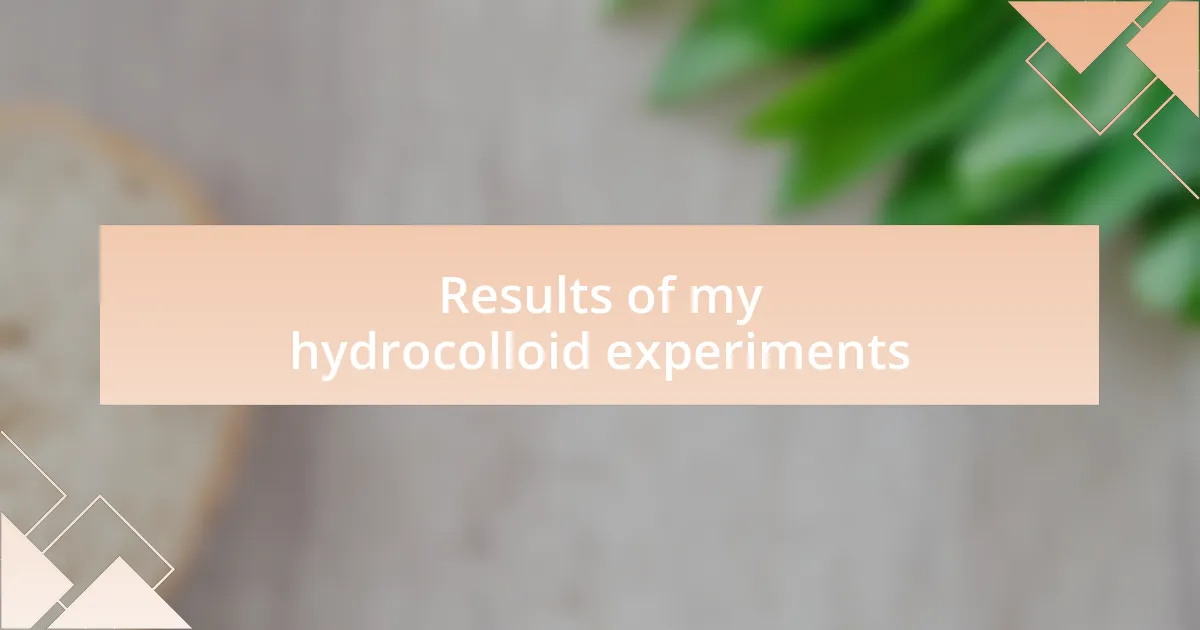
Results of my hydrocolloid experiments
Through my exploration of hydrocolloids, I found that the role of texture in a dish can be transformative. During my trials with pectin, I set out to create a gourmet fruit jam that would elevate breakfast. The first couple of batches ended up being too runny, but with careful temperature monitoring and precise measurements, I eventually crafted a spread that had both the perfect consistency and a delightful mouthfeel. Isn’t it fascinating how the tactile sensation can elevate an ordinary meal?
Another significant experiment involved carrageenan while attempting to mimic creamy sauces. At first, my sauce was more like a jelly than a luscious liquid. However, through trial and subsequent adjustments, I managed to produce a velvety, dairy-free alternative that surprised even my picky friends during a dinner party. Can you recall a time when you turned a simple dish into a highlight of the evening with just a few tweaks?
My journey with hydrocolloids also extended to the world of foams, particularly using lecithin. I remember the first time I prepared a coffee foam for dessert—it came out more like whipped egg whites instead of an airy puff. But once I adjusted the proportions and technique, the transformation was exhilarating. The light, frothy texture added an unexpected sophistication and depth, turning a basic dessert into a memorable experience. Have you ever had a culinary innovation that left your guests in awe?
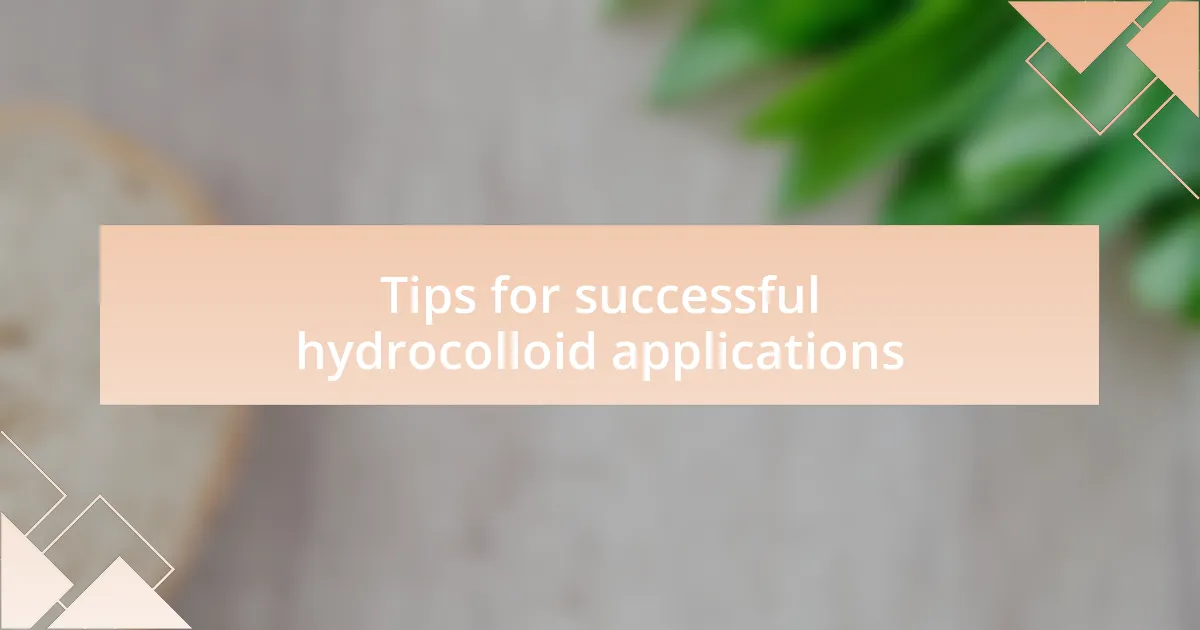
Tips for successful hydrocolloid applications
When it comes to successful hydrocolloid applications, precision is key. I once miscalculated the amount of agar-agar while trying to create a set jelly for a dessert, and the result was a textural catastrophe. It’s easy to underestimate the impact of measurements, but I learned firsthand that even a gram or two can make a world of difference. Have you ever faced a similar scenario where a small oversight led to a big lesson?
Experimenting with temperature also played a crucial role in my hydrocolloid adventures. I remember vividly simmering my first batch of pectin without paying attention to the heat; it didn’t gel properly and ended up being a syrupy mess. Through that experience, I discovered the importance of controlled cooking times and temperatures. It’s fascinating how these subtle adjustments can elevate the final product significantly. Have you ever had to revisit a process because the heat was off?
Additionally, I found that patience and trial-and-error are essential when working with hydrocolloids. After several attempts to achieve the perfect foam with xanthan gum, I was almost ready to give up. But then I took a step back, reassessed my technique, and made minor alterations. The resulting airy foam was not only a triumph but also a stunning visual highlight on the plate. Isn’t it rewarding to know that persistence often leads to delicious outcomes?